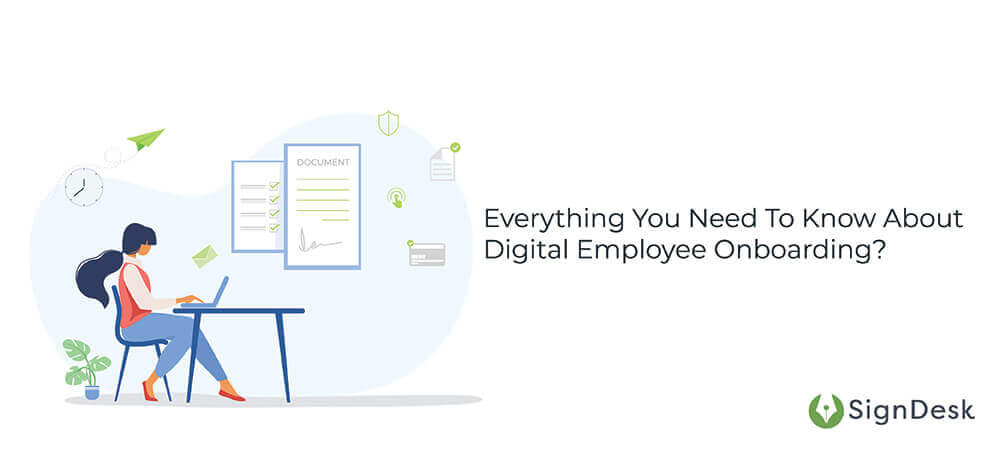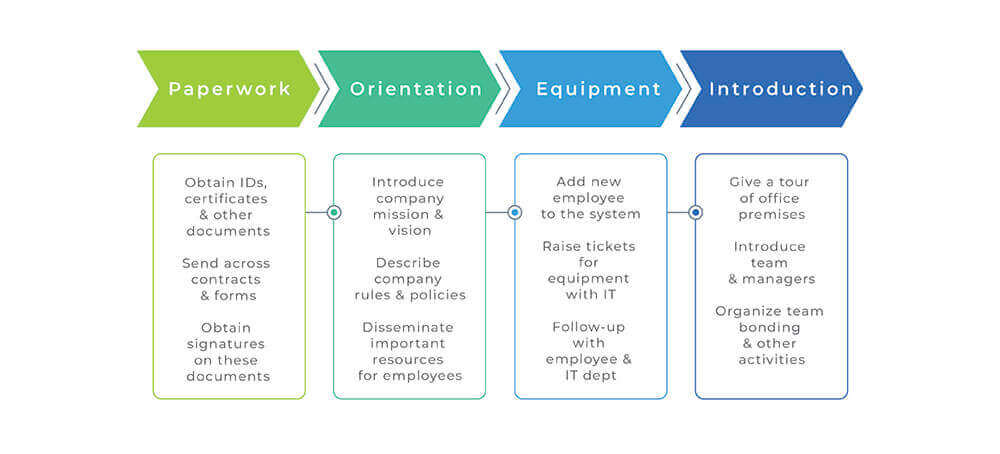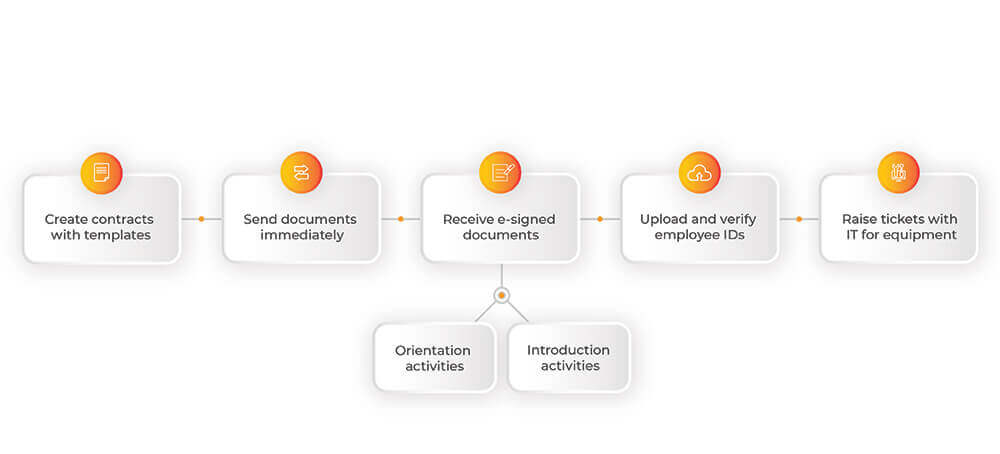What is onboarding?
For new employees, onboarding is integral to the very first impression they’ll form of their workplace.
Employee onboarding is the process of introducing a fresh employee to their work, their offices and colleagues, and the ethos and inner workings of their new company.
This is a pretty fuzzy definition, and therefore there’s no single “right” way to go about onboarding employees. This has resulted in various onboarding workflows and procedures, each with its own benefits and justifications.
However, while the jury might still be out on how best to onboard employees, there are several tools available to optimize a company’s onboarding workflow and ensure low attrition rates.
We’ll get to the most important of these tools in a while, but first, let’s see if the process of employee onboarding is worth investing in these tools.

Employee onboarding is more important than you might think
Most companies are already aware of how important the employee onboarding process is. Here are a few numbers to underscore the value of a good onboarding workflow.
- 64% of employees say they’re more likely to quit following a bad onboarding process
- 15% of employees quit within the first three months if the onboarding process is unsatisfactory
- The loss of an employee in the early stages can cost a company up to double the employee’s annual salary
These statistics, along with the fact that nearly 22% of businesses do not have a concrete employee onboarding process, indicate that a lot of companies fail to grasp an opportunity to optimize their onboarding workflows and boost their growth.
But how can businesses make their employee onboarding process more efficient?
To answer this question, we’ve first got to look at how most companies onboard employees.
What’s employee onboarding like in most businesses?
Employee onboarding consists almost entirely of the following aspects:
- Onboarding paperwork: HR obtains several documents from new employees for documentation purposes; these include IDs, proofs of residence, and certificates of accreditation. Paperwork additionally consists of several contracts and forms requiring the signature of new employees, such as employment contracts, NDAs, etc.
- Orientation: The mission and vision of a company are inculcated into new employees through the orientation process. Employees are usually gathered together and instructed on the basic aspects of their new organization and how things are done.
- Supply of equipment: New employees are to be provided with both the hardware and software required to do their jobs. This is a collaborative process involving the HR and IT departments of an organization.
- Team introductions and other activities: Finally, new employees have to be introduced to their team, managers, and other employees they’ll be working closely with in order to build a rapport encouraging productive collaborations.
Here’s an infographic that succinctly captures the employee onboarding process.

The problems with the traditional paper-based employee onboarding workflow are clear from this visual.
Employee onboarding as it’s done now requires the employee to go through (at least) 4 different parallel workflows and also requires HR professionals to track every new employee’s journeys through these separate workflows.
Clearly this is an inefficient model that elongates onboarding time for employees, decreases the efficiency of HR departments, and due to the messy nature of the process, will undoubtedly result in dissatisfied employees and higher rates of attrition.
So how can a business side-step these issues and make their employee onboarding process faster, better, and more efficient?
Virtual onboarding
To those of you paying attention, one thing must’ve been clear after looking at the infographic – Businesses could save a lot more time with employee onboarding if these four parallel workflows could take place on a single track.
The processes involving employee paperwork and the provision of equipment are particularly time-consuming and prime candidates for an overhaul.
But what shape will this overhaul take?
If the heading of this paragraph is any indication, you already know the answer to that question!
Digitalizing the employee onboarding process with the right tools can restructure the entire onboarding workflow into one that’s more efficient by leaps and bounds. Digitization with the right onboarding tool provides businesses with templates, automated onboarding workflows, document verification mechanisms, and e-signatures with which employee onboarding can be expedited.
This is done by –
- Digitizing all onboarding-related documents, including document creation using templates
- Automating document execution with e-signatures
- Digitizing the document upload and verification processes using ML techniques
- Streamlining the onboarding process with a single documentation platform
Therefore the ideal employee onboarding workflow will take place on a single platform equipped with templates and an e-signature workflow, along with facilities in place allowing the upload of IDs and other documents, reading and extraction of information using OCR, and the verification of this information against standard databases.
All this sounds good on paper, but what will a digital onboarding process look like? Here’s a visual that illustrates the digital onboarding process.

In this much-improved model, HR departments will need a single platform to conduct all onboarding-related documentation and due diligence.
Should you be onboarding virtually?
Companies that use an virtual onboarding system have been shown to experience –
- Up to 90% reduction in onboarding costs
- Decrease in time spent on documentation from days to minutes
- 20% increase in efficiency across verticals
- 120 hours saved per new employee onboarding
So there really isn’t a reason for your business to not be onboarding employees digitally!
But then there’s the question of which digital onboarding tool is the best fit for your organization.
You’ll need your onboarding tool to be trusted, cost-effective, customizable, legally compliant, and completely automated.
SignDesk’s digital onboarding product ticks all these boxes and is guaranteed to automate away all the inefficiencies of your current employee onboarding system.
Our digital onboarding solution uses OCR verification and the latest in ML techniques for document verification and data extraction. legal experts create our intuitive document templates and our secure e-signatures allow employees to sign documents from anywhere and at any time.
SignDesk’s onboarding product has also been awarded the Global Banking and Finance Review’s Best Digital Onboarding Product of 2020 in India and is in use by several major banks and financial institutions.
Book a demo with us now to see how we can help you onboard employees faster and better.